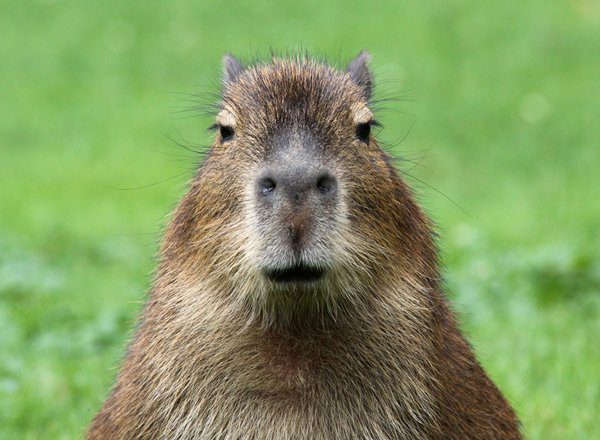Table of Contents
Imagine stumbling upon a creature that resembles a giant guinea pig, but 100 times larger. Intrigued? Get ready to delve into the captivating world of capybaras, as we uncover 10 fascinating facts about these remarkable creatures. From their social nature to their affinity for water, get ready to embark on a journey of discovery and learn about these unique animals unlike any other. Get ready to be amazed by the world of capybaras!
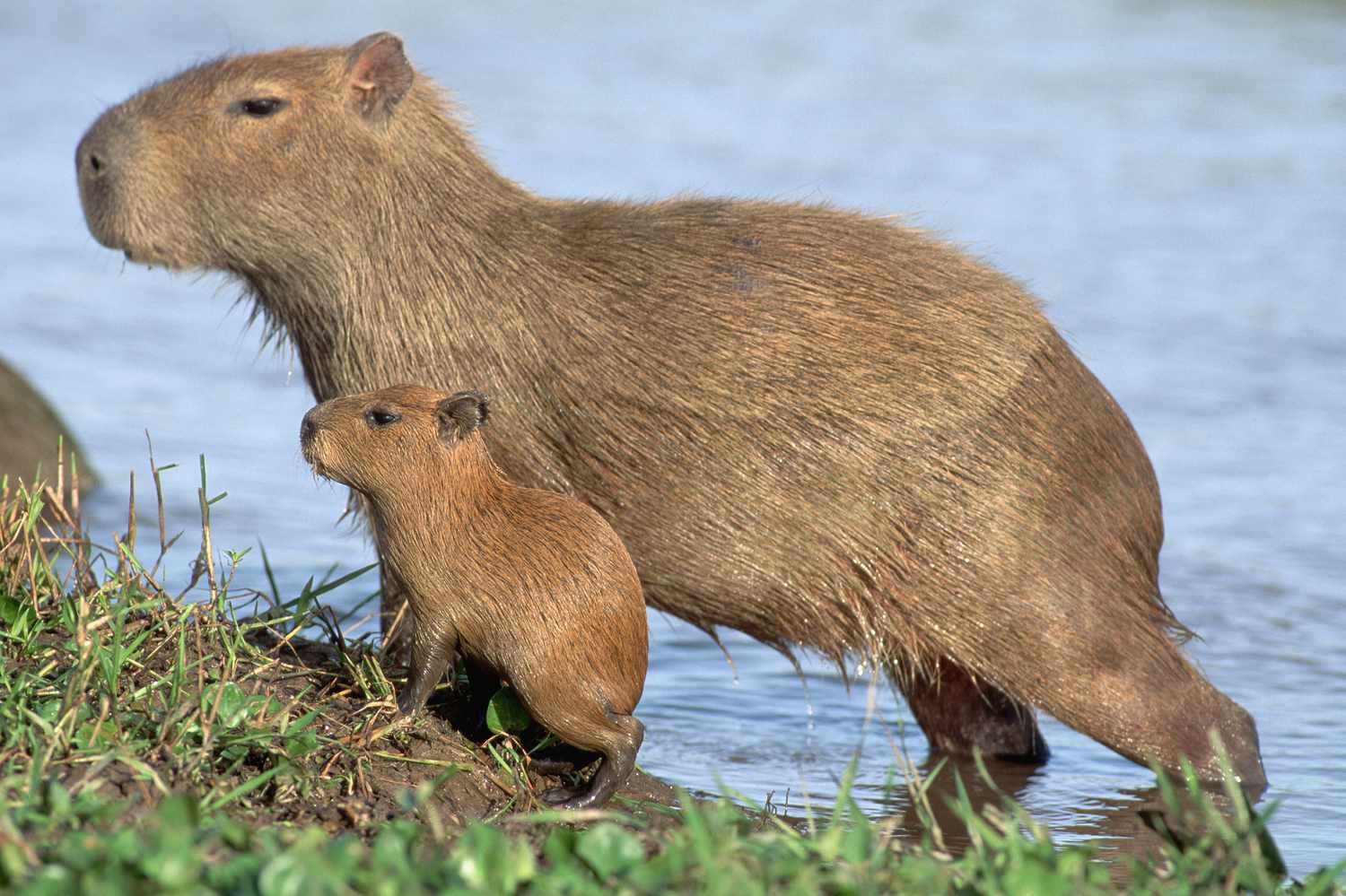
Physical Description
Capybaras are the largest rodents in the world, reaching a length between 3.5 and 4.5 feet and weighing between 77 and 146 pounds. Despite their size, these friendly creatures have a somewhat stocky build and a barrel-shaped body. They have short, sturdy legs and a blunt head with small round ears and dark, expressive eyes. Capybaras have a rough, bristly brown or grayish-brown fur that helps to regulate their body temperature.
Habitat and Distribution
Native Regions
Capybaras are native to South America, specifically the countries of Brazil, Venezuela, Colombia, and Argentina. They can be found in a variety of different habitats, including grasslands, wetlands, forests, and marshes. These adaptable creatures are well-suited to both tropical climates and temperate regions.
Preferred Habitats
Capybaras prefer to live near bodies of water such as rivers, lakes, and ponds. They are semiaquatic animals, meaning they spend a considerable amount of time in water and have adapted to have several aquatic features that aid in their survival.
Aquatic Adaptations
Capybaras have partially webbed feet, which allow them to swim efficiently through water. This adaptation enables them to escape from predators and also provides access to a diverse range of food sources. Additionally, capybaras have nostrils that can close underwater, allowing them to remain submerged for several minutes at a time.

Social Behavior
Group Dynamics
Capybaras are highly social animals and often live in large groups known as herds. These herds usually consist of 10 to 20 individuals, but they can sometimes reach up to 100 members. Within the herd, the capybaras establish a social hierarchy, with dominant individuals taking charge and protecting the group.
Communication
Capybaras communicate using a variety of vocalizations, including barks, whistles, and purrs. They also use visual cues such as body postures and facial expressions to express their feelings and intentions. Scent marking is another important form of communication for capybaras, as they have scent glands on their noses and in the anal region.
Grooming Habits
Capybaras have a unique grooming behavior known as allogrooming, where they help each other maintain their fur and remove parasites. This behavior strengthens social bonds within the herd and also helps to keep their coats clean and healthy.
Diet and Feeding Habits
Herbivorous Diet
Capybaras are herbivores, meaning they mainly feed on plant material. Their diet consists mainly of grasses, aquatic plants, and various types of vegetation found near rivers and lakes. They have a specialized digestive system that allows them to efficiently process a high-fiber diet.
Favorite Foods
While capybaras primarily feed on grasses, they also enjoy munching on fruits, vegetables, and even tree bark. Their favorite delicacies include water hyacinth, rice, and a variety of aquatic plants. Capybaras have a strong affinity for watermelons and will eagerly devour them when given the opportunity.
Feeding Techniques
Capybaras are agile grazers that can bend their heads down to reach grasses both on land and underwater. They have sharp front incisors that they use to gnaw through tough vegetation, while their molars at the back of their mouths help to grind the food before it is digested.
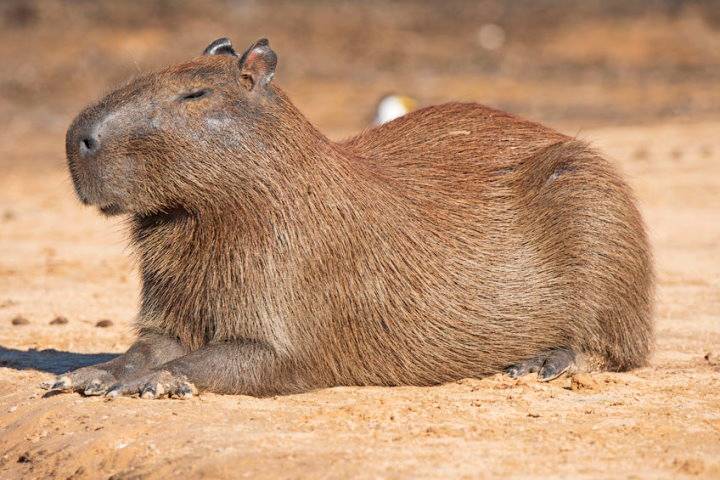
Reproduction
Mating Rituals
Capybaras have a unique mating ritual that involves vocalizations, scent marking, and physical interactions. Males compete for the attention of females by engaging in rituals such as sparring with each other and making vocalizations known as copulatory calls. Once a male successfully attracts a female, they form a monogamous pair bond that can last for several breeding seasons.
Gestation Period
The gestation period for capybaras is approximately 150 days. After mating, the female capybara will give birth to a litter of around four to eight young, known as pups. These pups are born fully furred and with their eyes open, ready to walk and even swim soon after birth.
Number of Offspring
Capybaras are highly prolific breeders, and a typical female can give birth to multiple litters in a year. The average litter size is around four to eight pups, but it is not uncommon for a female capybara to have up to 10 offspring in a single litter.
Life Span and Predators
Average Life Expectancy
In the wild, capybaras have an average life expectancy of around 8 to 10 years. However, in captivity, where they are protected from predators and have access to a controlled environment, capybaras can live up to 12 years or even longer.
Predators and Threats
Capybaras have several natural predators, including jaguars, caimans, anacondas, and large birds of prey. These predators primarily target the young and vulnerable capybaras. Additionally, habitat loss and hunting for their meat and skin pose significant threats to capybara populations.
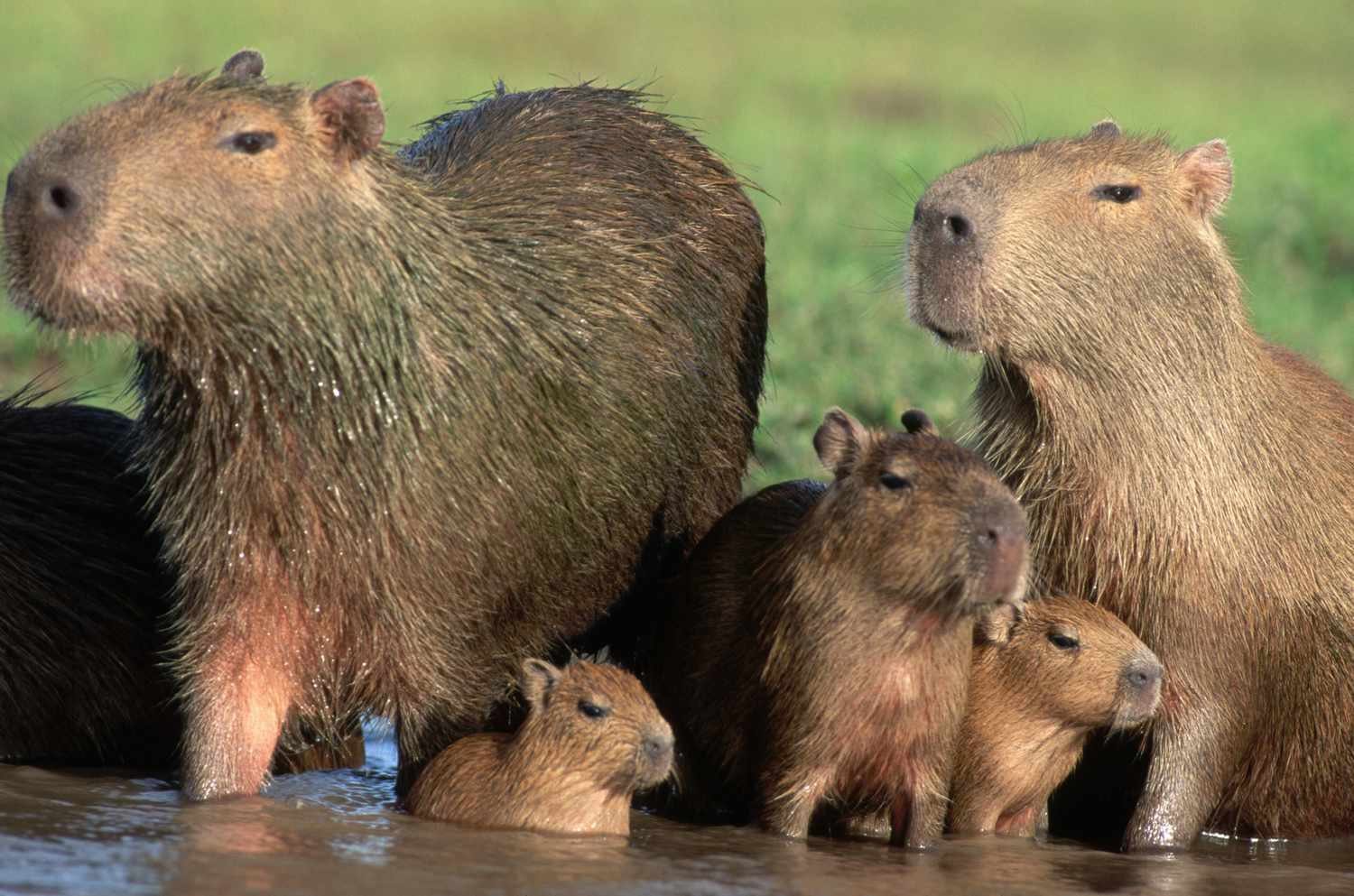
Unique Adaptations
Webbed Feet
One of the key adaptations of capybaras is their partially webbed feet, which are specifically designed for efficient swimming and navigating through water. The webbing between their toes helps to propel them through rivers and lakes, making them excellent swimmers.
Excellent Swimmers
Thanks to their webbed feet and streamlined bodies, capybaras are excellent swimmers. They can easily cross bodies of water, using their strong hind legs to propel themselves forward, and their ears and nose positioned on the top of their head allow them to remain alert while partially submerged.
Stay Cool with Mud Baths
To regulate their body temperature and keep cool during hot days, capybaras often engage in mud baths. They will wallow in shallow water or mud, coating their fur with a layer of mud that acts as a natural sunscreen and helps to keep them cool by evaporation.
Human Connection
Capybara as Pets
Capybaras have gained popularity as exotic pets in some parts of the world, particularly in South America and parts of North America. However, it is essential to note that capybaras have specialized needs and require large, enriching enclosures with access to water. Owning a capybara as a pet can be challenging and requires extensive research and preparation.
Cultural Significance
In some South American cultures, capybaras hold cultural and symbolic significance. They are considered a symbol of abundance, social harmony, and good luck. In some indigenous communities, capybaras are featured in traditional stories, artwork, and folklore, reflecting their connection to the natural world and their importance in local traditions.
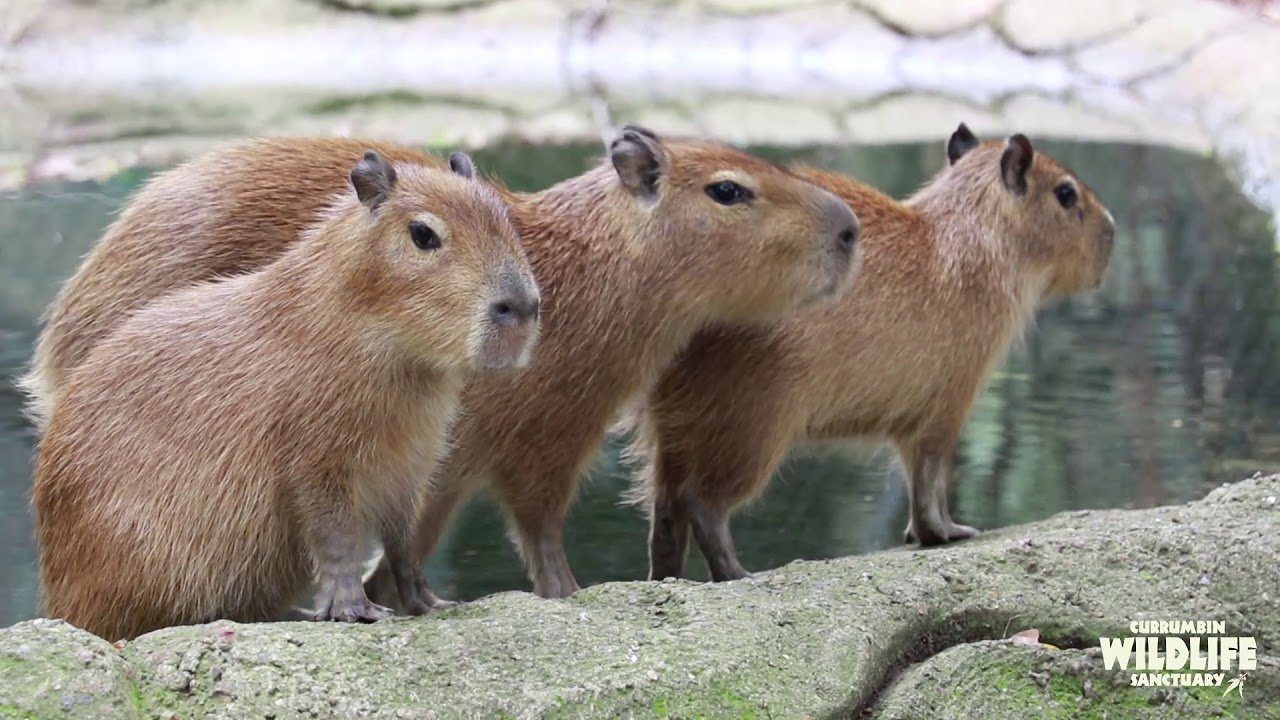
Conservation Status
Threats to Population
Capybara populations face several threats, including habitat loss due to deforestation and agriculture. Hunting for their meat and skin also poses a significant threat to capybaras, particularly in areas where their fur is highly valued. Additionally, environmental pollution and the spread of diseases can impact capybara populations.
Conservation Efforts
Conservation efforts for capybaras mainly focus on habitat protection and raising awareness about the importance of these unique creatures. Some organizations work to establish protected areas where capybara populations can thrive, while others focus on education and supporting sustainable practices to minimize human impacts on their habitats.
Interesting Capybara Facts
World's Largest Rodent
Capybaras hold the unique distinction of being the largest rodents in the world. Their size and weight make them stand out among their fellow rodent species.
Communal Defecation
Capybaras have an interesting behavior known as communal defecation, where they gather in groups to defecate. This behavior helps to establish territorial boundaries and maintain social cohesion within the herd.
Being Highly Social
Capybaras are known for their highly social nature. They form strong bonds within their herds and engage in communal activities, such as grooming and playing together.
Chilling with Other Species
Capybaras are known for their ability to get along well with other species. They often share their habitat with birds, turtles, and even caimans, forming unusual interspecies relationships.
Semiaquatic Lifestyle
Capybaras have evolved to thrive in both aquatic and terrestrial environments. Their adaptations allow them to live harmoniously between the land and water, making them unique among mammals.
Capybara and Anacondas
Despite their potential as prey for anacondas, these two species are known to coexist peacefully in the wild. This fascinating relationship provides insights into the complex dynamics of nature.
Close Relatives of Guinea Pigs
Capybaras are closely related to guinea pigs and share similarities in their physical appearance and behavior. However, capybaras are significantly larger and have different ecological adaptations.
Thick and Insulating Fur
Capybaras have a dense and insulating fur that helps them regulate their body temperature and protects them from the elements, particularly during colder seasons.
Status as National Symbol
Capybaras hold significant cultural value in some countries, where they are considered national symbols, representing the unique natural heritage of their respective nations.
Ad Mirroring Behavior
Capybaras have been observed to exhibit ad mirroring behavior, where they mimic the facial and body expressions of their companions. This behavior helps to strengthen social bonds and enhance communication within the herd.
